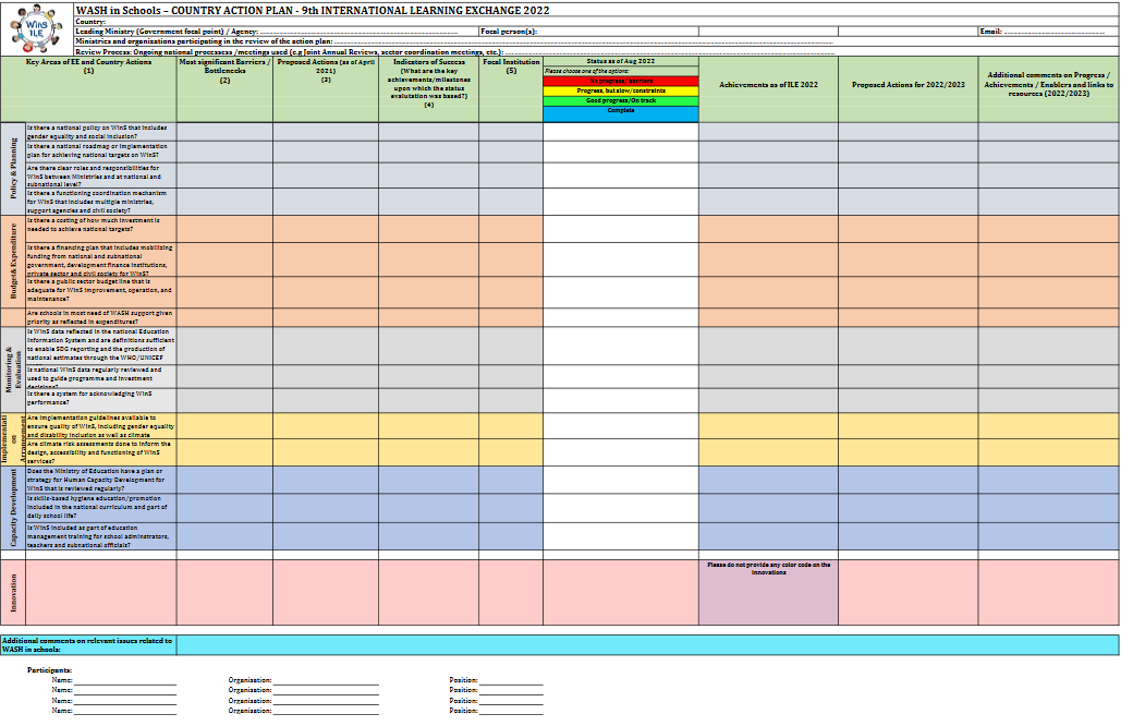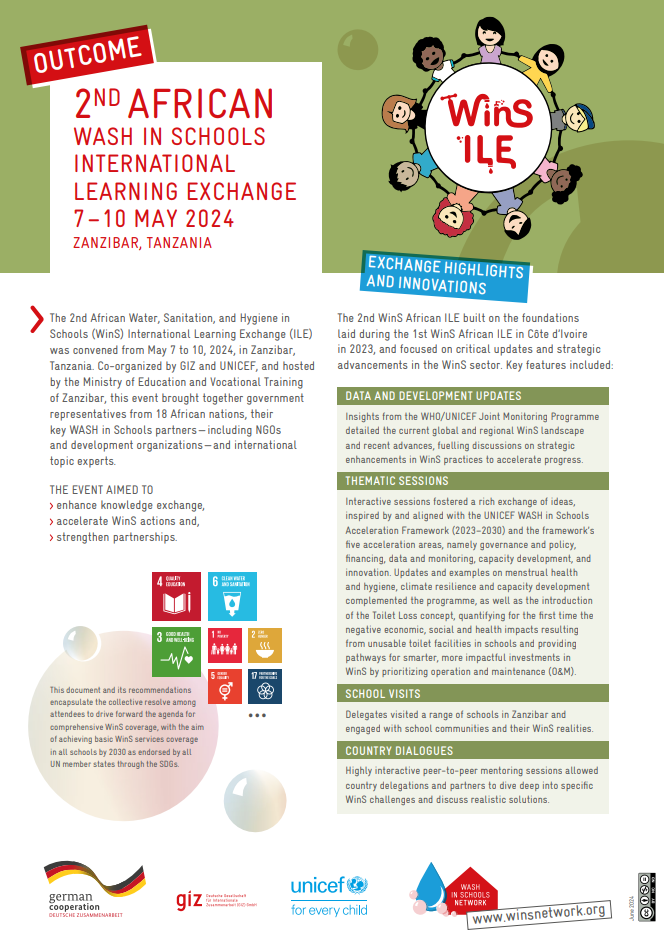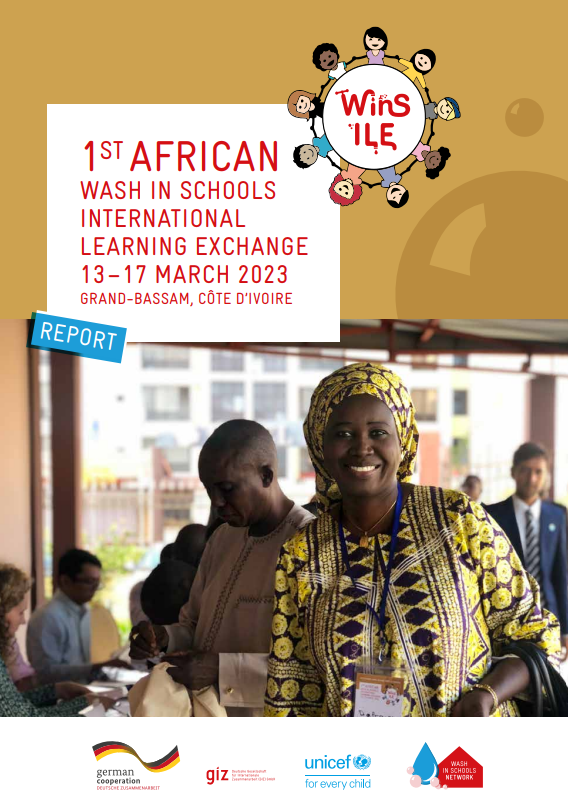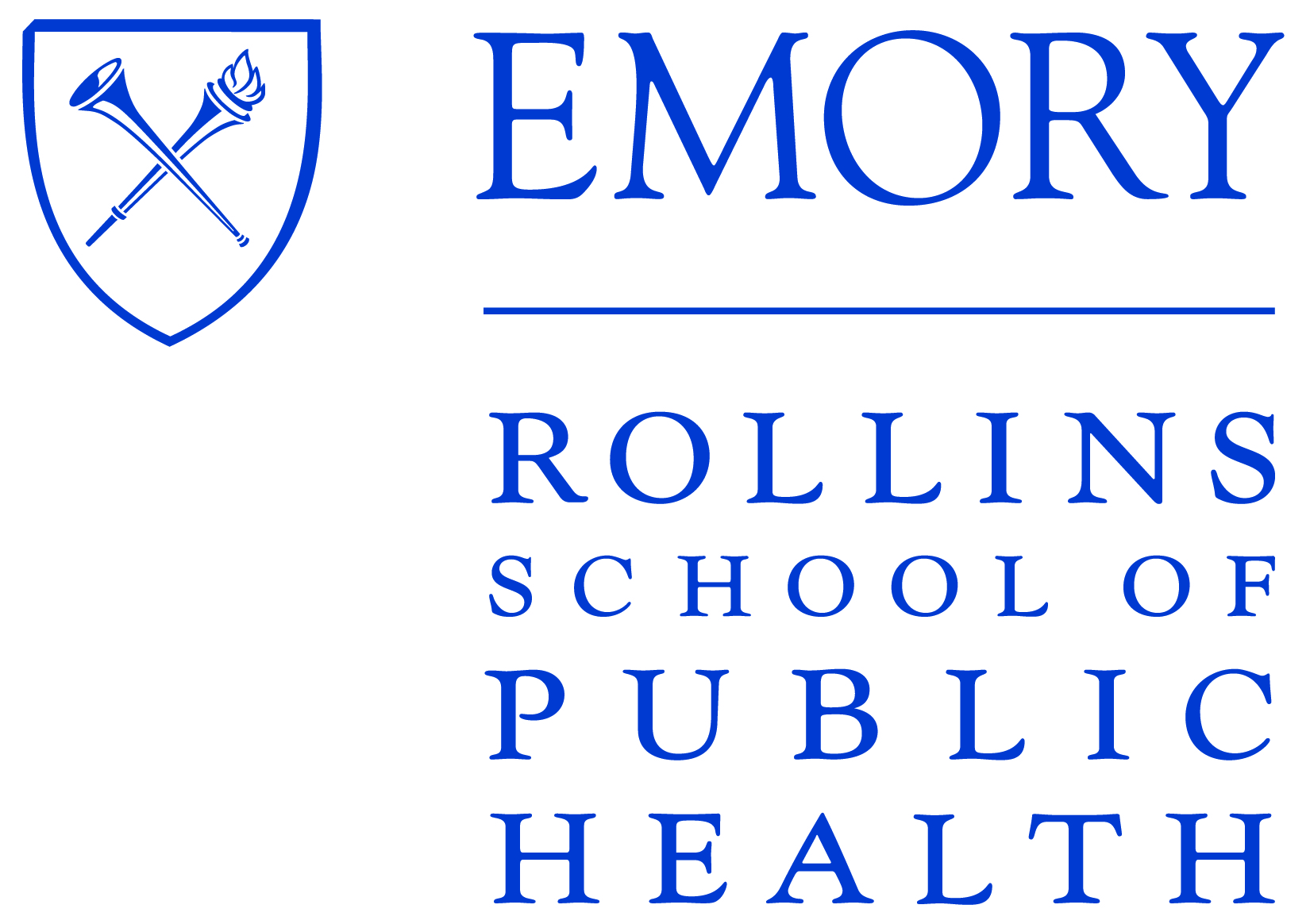
WASH in Schools Enabling Environment Matrix
Strengthening the national systems for improved, sustainable and gender sensitive Water, Sanitation, and Hygiene facilities at schools has been one of the main areas of exchanges during five subsequent Water, Sanitation, and Hygiene in Schools International Learning Exchanges.
Size: 0.125 MB
Strengthening the national systems for improved, sustainable and gender sensitive Water, Sanitation, and Hygiene facilities at schools has been one of the main areas of exchanges during five subsequent Water, Sanitation, and Hygiene in Schools International Learning Exchanges. Similar to the overall Water, Sanitation, and Hygiene sector, affecting positive change in Water, Sanitation, and Hygiene in Schools performance requires a system-wide approach that tackles several dimensions – including policy, financing and institutions, capacity development, monitoring, which are some of the key areas of the Enabling Environment framework.
According to the “Strengthening Enabling Environment for Water, Sanitation, and Hygiene Guidance Note, UNICEF, May 2016”, “An Enabling Environment (EE Matrix) of the Water Sector is a set of interrelated sector functions that impact the capacity of governments and public and private partners to engage in the Water, Sanitation, and Hygiene service delivery development processes in a sustained and effective manner. In the context of UNICEF’s work, a Water, Sanitation, and Hygiene enabling environment is one that creates the conditions for a country to have sustainable, at-scale Water, Sanitation, and Hygiene services that will facilitate achievement of the Water, Sanitation, and Hygiene SDG of Universal Access for All with Progressive Reduction on Inequality”.




